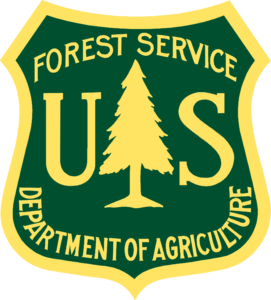Tahoe Basin Christmas tree online permit sales begin Nov. 16
October 12th, 2020USDA Forest Service
Pacific Southwest Region
Lake Tahoe Basin Management Unit
35 College Drive
South Lake Tahoe, CA 96150
http://www.fs.usda.gov/ltbmu
News Release
For Immediate Release
October 8, 2020
Media contact: Lisa Herron
(530) 721-3898
laherron@fs.fed.us
www.facebook.com/LakeTahoeUSFS/
Twitter: @LakeTahoeUSFS
Tahoe Basin Christmas tree online permit sales begin Nov. 16
SOUTH LAKE TAHOE, Calif., Oct. 8, 2020 – Christmas tree permits for National Forest lands in the Lake Tahoe Basin will be available for purchase online through Recreation.gov beginning November 16, 2020. Details about designated cutting areas, dates and types of trees that may be cut can be found at https://www.recreation.gov/tree-permits/ltbmu.
“For many families, venturing into the National Forest to cut their Christmas tree for the holidays is a treasured tradition carried on for generations,” said Acting Deputy Forest Supervisor, Matt Jedra. “For families creating new traditions, a trip to their local forest to cut their own Christmas tree may be a thrilling experience as they discover the joy of hiking through the forest in search of the perfect holiday centerpiece.”
The Forest Service decided to offer permit sales through Recreation.gov as an added convenience for visitors, as well as provide an alternative to in-person transactions at offices that may remain closed due to the COVID-19 pandemic.
To purchase a Christmas tree permit, visit Recreation.gov and search for Lake Tahoe Basin Management Unit Christmas Tree Permits. It is important to carefully read the overview and need-to-know information prior to purchasing the permit. Visitors will also need to set up or login to a Recreation.gov account to complete the transaction and should print the permit prior to arrival at the cutting area.
Permits cost $10 each, plus a $2.50 online processing fee with a limit of one per family. Cutting under these permits is allowed until December 31, to accommodate military families and others who may need to celebrate a delayed Christmas.
Permit holders may choose from a variety of pine, fir or cedar trees up to six inches in diameter (at the base) in specially designated cutting areas. Cutting area maps will be available online at the time of purchase. Select a tree that is six inches or less in diameter at the base of the tree and be sure to choose a tree that is within 10 feet of another green tree. Do not remove the top of the tree, cut down the entire tree and leave a stump that is six inches or less above the ground. Scatter all discarded branches away from roads, ditches, and culverts. Place the permit on the dashboard of your vehicle before leaving the cutting area.
Permit holders should follow permit guidelines for responsible collection, including not trespassing onto private property when entering or leaving National Forest cutting areas. Observe seasonal road closures and be prepared to hike to the cutting area to find a tree. No off-road travel is allowed. Park in legal areas and do not block gates. Weather permitting, some National Forest roads will remain open to improve access to cutting areas.
Cutting a Christmas tree also improves forest health. The permit system helps to thin densely populated stands of small-diameter trees. Local forest health experts identify areas that benefit from thinning trees that tend to be the perfect size for Christmas trees. Removing these trees in designated areas helps other trees grow larger and can open areas that provide forage for wildlife.
Finally, it’s important to remember that weather conditions in the mountains are unpredictable and travel during winter weather can be dangerous due to wet and/or icy roads. On stormy days, wind may cause branches or trees to fall, so visitors should avoid cutting on wet, windy days. Always check the weather before heading out and tell someone where you are going and when you plan to return. Dress appropriately for cold weather conditions and be prepared for ice and snow. Carry tire chains and a shovel and bring emergency supplies, including water, food, blankets and a first-aid kit. Keep in mind, mobile devices may not work in some areas, so develop an emergency plan in case you cannot call for help.
###
The mission of the U.S. Forest Service, part of the U.S. Department of Agriculture, is to sustain the health, diversity and productivity of the nation's forests and grasslands to meet the needs of present and future generations. The agency manages 193 million acres of public land, provides assistance to state and private landowners, and maintains the largest forestry research organization in the world. Public lands the Forest Service manages contribute more than $13 billion to the economy each year through visitor spending alone. Those same lands provide 20 percent of the nation's clean water supply, a value estimated at $7.2 billion per year. The agency has either a direct or indirect role in stewardship of about 80 percent of the 850 million forested acres within the U.S., of which 100 million acres are urban forests where most Americans live.
USDA is an equal opportunity provider, employer, and lender.

